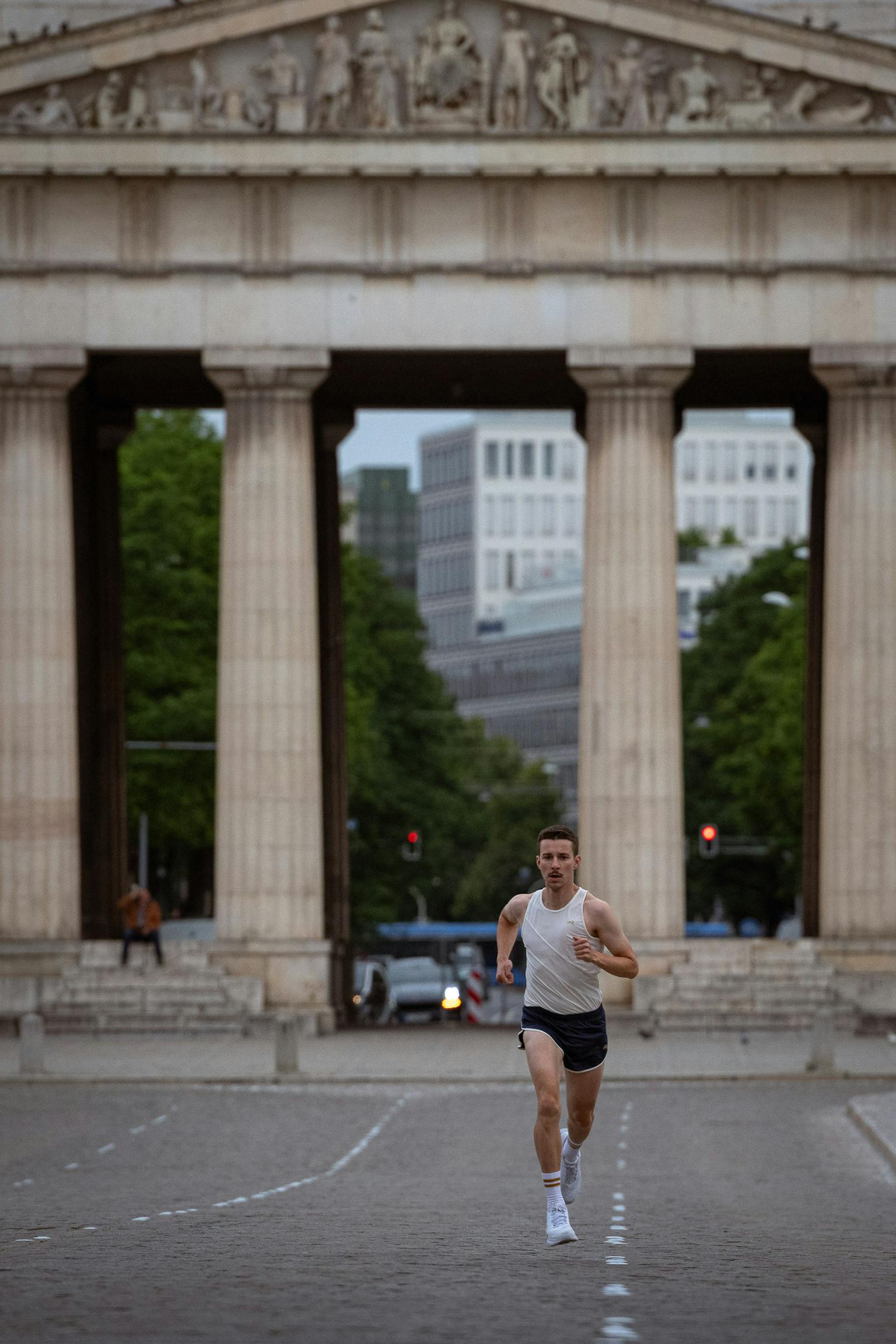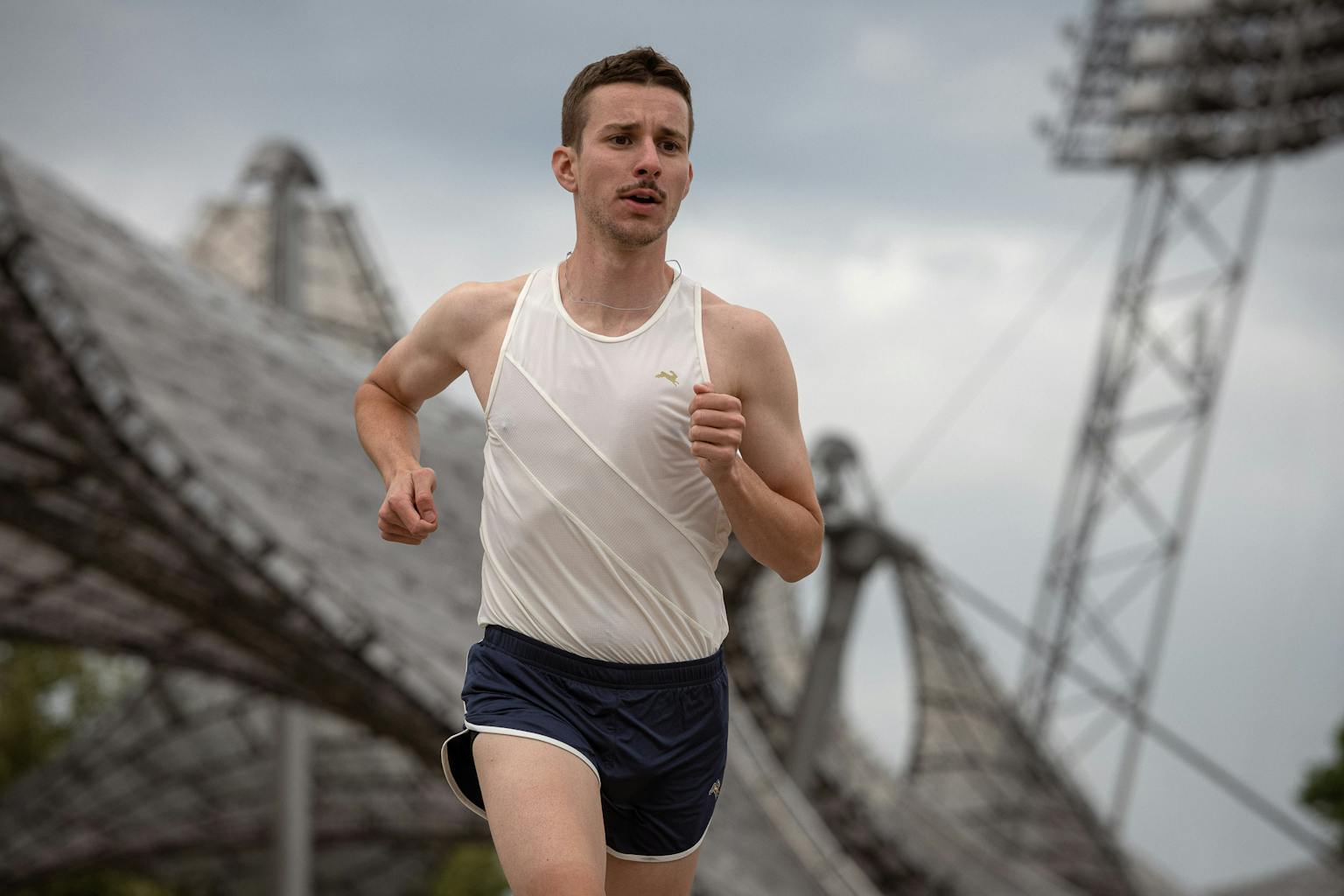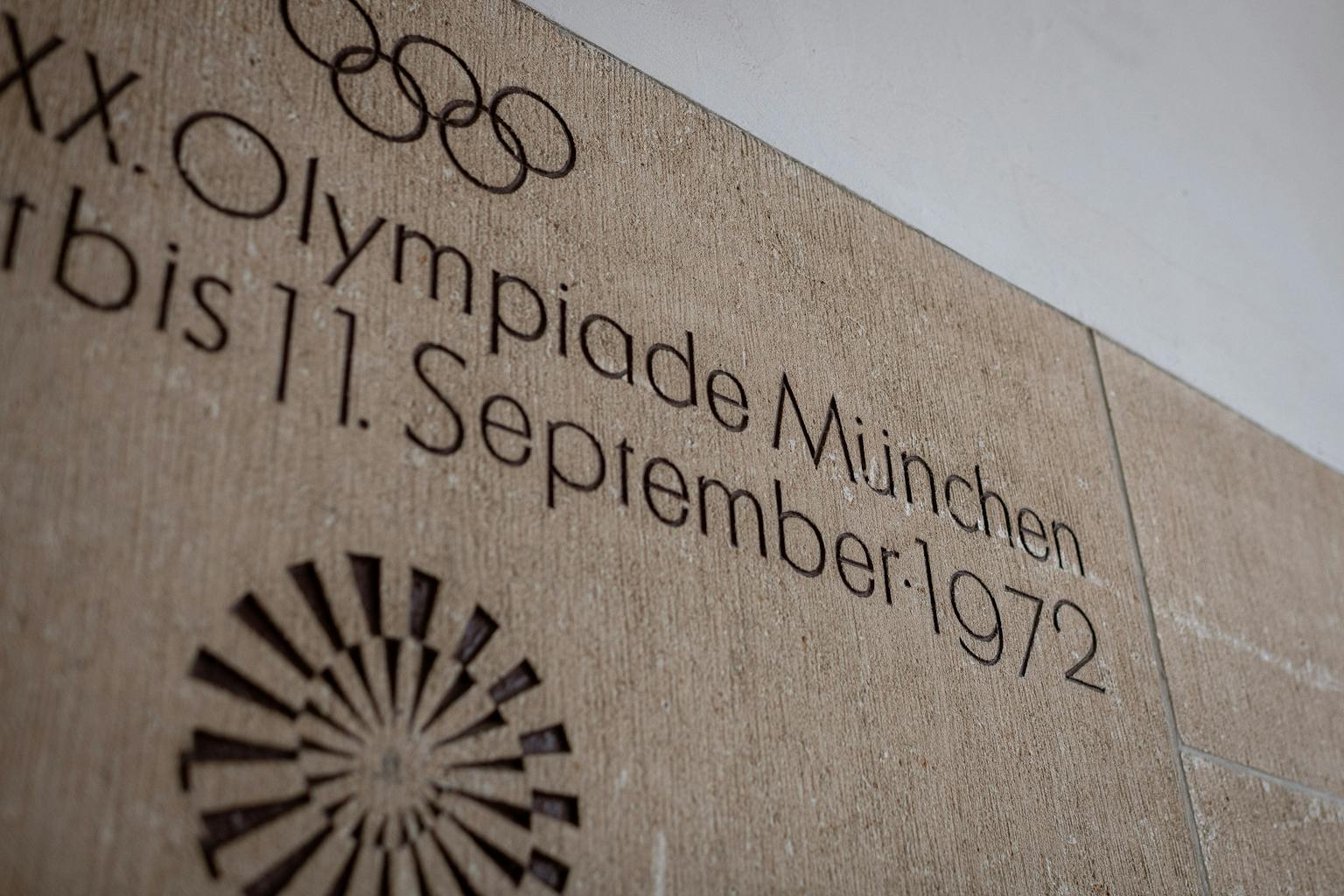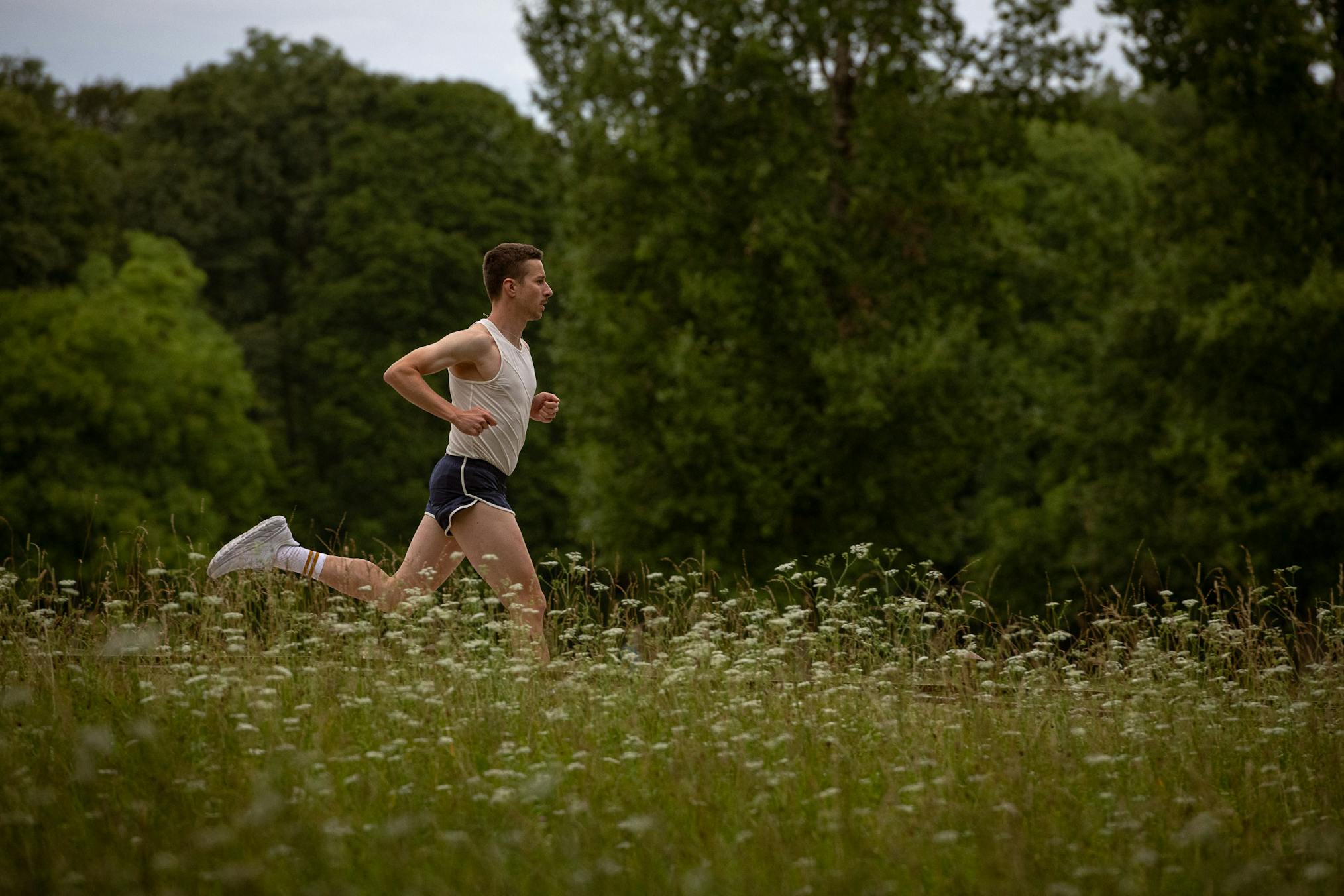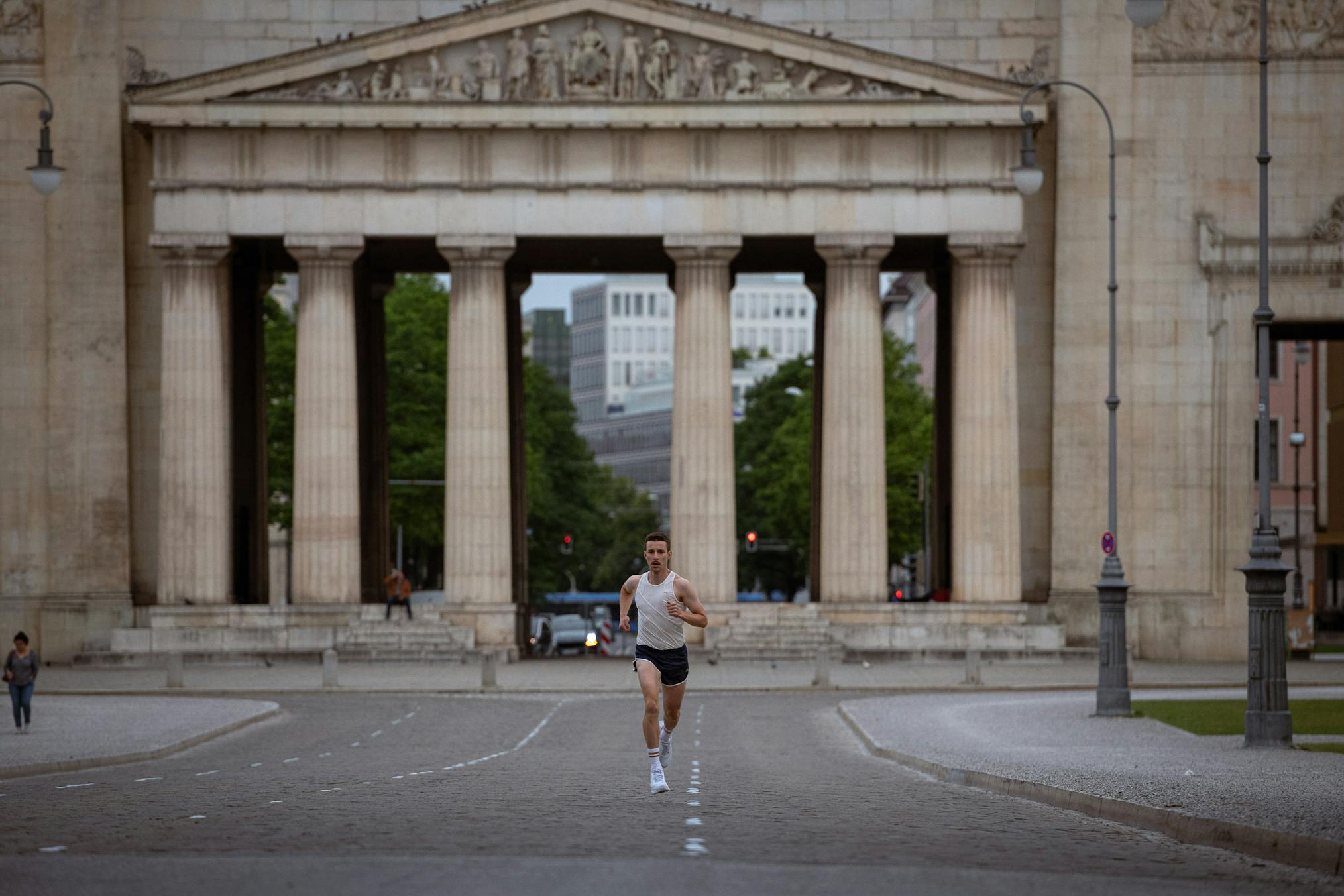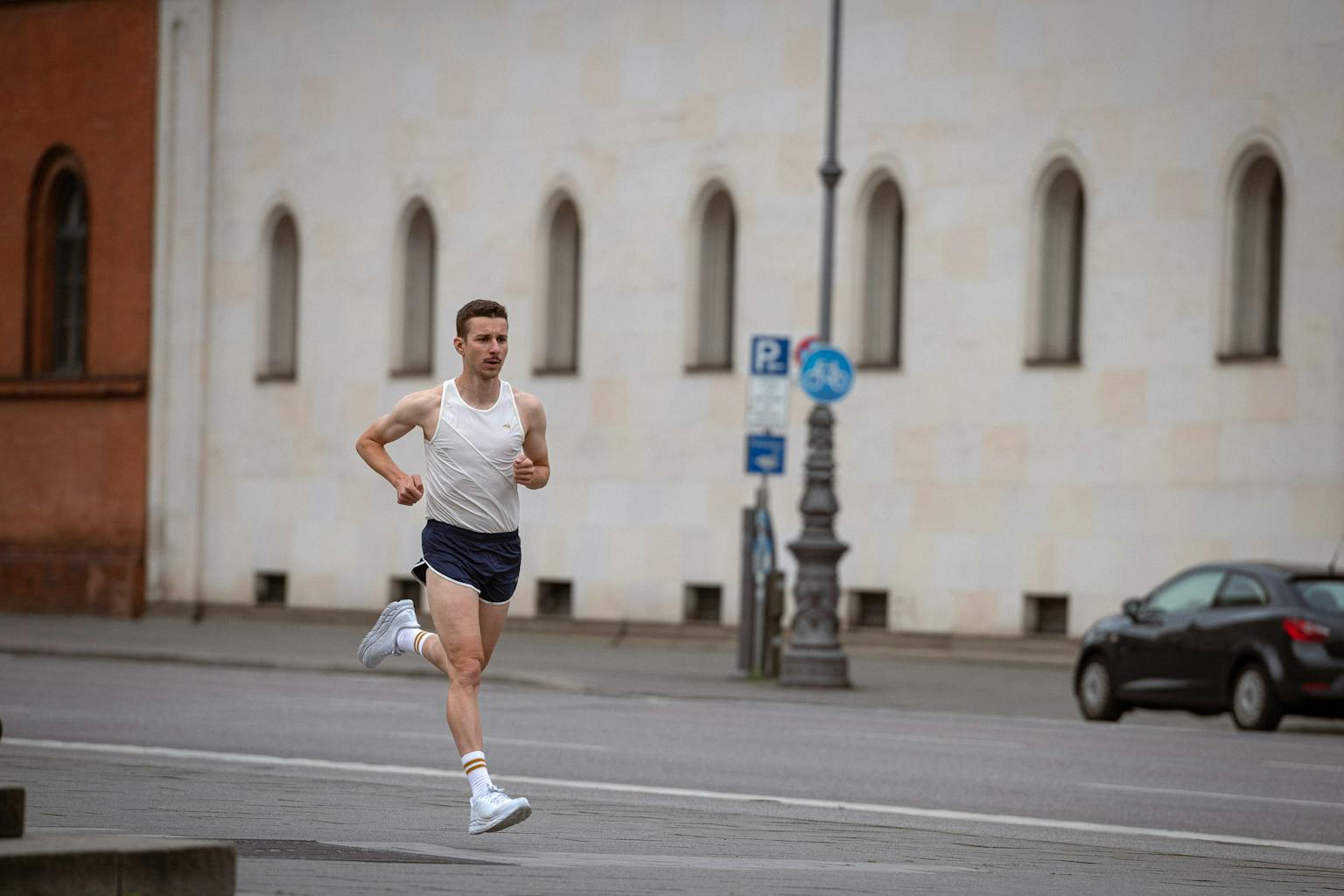"That he inspired a generation to take up running, was one of the catalysts for the running boom, and was briefly, a mainstream star was pure circumstance."
The paradigm was shifting fast. In the annus horribilis of 1968, as the largest, most privileged generation in American history was coming of age, there were protests against the war in Vietnam, there was the police riot at the Democratic national convention in Chicago, and there were political assassinations of Martin Luther King Jr., RFK, Malcolm X, and Medgar Evers. Years before Watergate completely severed trust in their parents’ institutions, the youth were being radicalized.
In the same year, but to less fanfare, Dr. Kenneth Cooper published his ground-breaking book, Aerobics, touting the cardiovascular health benefits of aerobic exercise. Though Cooper’s findings were empirically grounded, the movement he envisioned required a spark. As it turned out, the ideal catalyst arrived four years later on September 10, 1972 in Munich, Germany.
That Sunday afternoon, 24-year-old Frank Shorter, a law student at the University of Florida, who had been born in Munich while his father served as a military physician, won the Olympic gold medal in the marathon while millions of Americans watched live on ABC-TV.
Shorter’s victory, the first by an American in the Olympic Marathon in 64 years, combined with the impassioned race call by ABC’s Jim McKay and Erich Segal, Frank’s former Yale University professor and author of the book-turned-hit-movie Love Story, brought viewers to the edge of their seats, and inspired many of us to head out the door to run.
But Frank Shorter’s catalyzing achievement almost never came to pass, as another harbinger of a darker future intruded on what was presented as Die Heiteren Spiele, The Cheerful Games.
München
The Munich Olympics of 1972 was to be Germany’s prodigal return to the family of nations after the villainy of World War II. But in the pre-dawn hours of September fifth, as the Games moved into their final week, eight members of the militant Palestinian group, Black September, scaled a 2m-high chain-link fence and entered the lightly guarded Olympic Village armed with assault weapons and hand grenades, there to conduct a smaller, but no less sinister act of political terror. Once inside, they made their way to #31 Connollystrasse, the apartments housing the Israeli Olympic team.
The terrorists quickly killed two members of the team who tried to bar their entry, then held nine more athletes and coaches as hostages.
With shocking suddenness, the serenity of “The Cheerful Games” was shattered. The goodwill that West Germany had hoped to engender in the long wake of World War II, turned instead into another horror for the Jewish people.
The fate of the Games was all but an afterthought as the world watched in white-knuckled apprehension as black-hooded, gun-toting terrorists lurked inside the Israeli apartment as negotiations began with German officials.
When the attack began at 4:30 in the morning, American distance runner Frank Shorter was asleep on the fifth-floor balcony of the Olympic Village apartment room he shared with Dave Wottle, the Olympic 800m champion. Wottle had his brand-new bride in the room and wanted privacy.
“I heard the shots,” remembered Shorter. “I knew that wasn’t doors slamming. That was gun fire!”
The first reaction in the American camp was to think, ‘we’re all going home.’ The thought only intensified when, shortly after midnight, a failed rescue attempt at a nearby NATO air base led to the tragic loss of all nine hostages. Five terrorists also perished along with a single German police officer. How could the Cheerful Games possibly go forward now?
But instead of canceling, the IOC postponed competition for 34 hours while it held a memorial service in the Olympic Stadium.
“Over those two days,” remembered Shorter, “we went through all the stages you go through when you are in a traumatic event. By the time we got back from the memorial service, we realized if we don’t compete, then we’re just giving in and doing what the terrorists want.”
Though emotionally scarred by the tragedy, 74 men representing 39 countries took to the starting line in the Olympic stadium at 3PM local time on September 10, 1972.
Besides Shorter and Moore, who were ranked first and fifth in the marathon in 1971 by Track & Field News, medal favorites included 1968 Olympic champion Mamo Wolde of Ethiopia; 1968 silver medalist Kenji Kimihara of Japan; world record holder Derek Clayton of Australia; Belgium’s Karel Lismont, No. three in the world in 1971; and 1970 Boston Marathon course record holder Ron Hill of Great Britain.
“I developed a theory very early on,” said Shorter. “Coming into any major race there are going to be 10 people who have the potential to win. And three of those 10 will have timed it in training to have a good day. My goal was to be one of those three.”
The loop course through the city traced an outline reflecting the dachshund mascot of the Games named Waldi. Mostly flat, changing only 31 meters in elevation from start-to-finish, it was a rhythm runner’s course. But with many twists and turns, it was also a good course to get away and hide, if you could. The conditions were favorable, too, cool and overcast with rain in the forecast.
As with most championship races, the opening miles were a slog, nobody taking the initiative. England’s Ron Hill towed the field through a desultory 15:51 5K, 2:13-high marathon pace, well off the 2:12:12 Olympic record set by Ethiopia’s Abebe Bikila in Tokyo 1964 where he defended his 1960 victory in Rome. Australia’s Derek Clayton brought the lead pack past 10K in 31:15, splitting the second 5K in 15:24.
Though Shorter was in only the second year of marathon running, he had already completed four, including his debut runner-up finish at the AAU Nationals in Eugene, Oregon in June 1971 behind his friend Kenny Moore.
“In my first marathon, I turned to Kenny at 22 miles and said, “why couldn’t Pheidippides have died here? I realized that 22 was the shifting point. Your glycogen is depleted. The body is shifting over to burn fat. My strategy for Munich was: by 22, I was going to have the lead.”
An astute racer from his days at Mount Hermon Academy in Massachusetts, then Yale University and the Florida Track Club, Frank had scouted every meter of the marathon course during his two weeks in Munich.
“At nine miles the course made a 140-degree turn away from this small canal we were running alongside. When we reached that point, I knew what the course was like up ahead. I was at the back of the pack on the outside at the turn, but my momentum was carrying me to the front. So, I said, “OK, here we go. Let’s see how everybody is feeling.”
Shorter had come to Munich after winning the previous year’s Pan Am Games Marathon in Cali, Colombia, then December’s Fukuoka International Marathon in Japan, the unofficial world championship. He also carried speed, fresh off a fifth-place finish in the 10,000m Olympic final one week earlier, where he ran an American record of 27:51.32.

“It wasn’t arrogance, but I had the feeling there’s a good chance Derek Clayton hadn’t run a 4:30 mile in the last two months. But if I ran a 4:30, it would feel fine for me.”
Frank engaged - “OK, let’s press a little harder, see how they respond.” Off of 5:01 per mile pace, he accelerated through a 4:33 breakaway mile, passing 15K in 46:21, a 15:06 5K split. A glance over his left shoulder revealed he had five-seconds on a struggling chase pack.
“From nine to 17 miles, I averaged 4:45, 4:46 per mile,” he says. Nobody could match him.
At 20 miles, the course crossed a small bridge as it exited the dirt path around the twisting, English Garden section of the course.
“All of a sudden, I looked up and there was Florida coach Roy Benson standing by the bridge alongside a bicycle. ‘You have a minute and fifteen second lead,’ he called out.
Frank started doing the math in his head: six miles, 75 seconds. Somebody needed to run 12 seconds per mile faster than he was going then to have any chance.
“If I can just maintain this effort,” thought Frank, “I am going to be hard to catch.”
Behind him, Karel Lismont of Belgium, Mamo Wolde of Ethiopia, and Kenny Moore of the USA were locked into a three-way battle for the lesser medals. Frank had long since disappeared on the turn-cluttered course.
Though he had sealed his Olympic victory, Frank was not the first man to run into the Olympic stadium.
“I heard a big cheer just as I was entering,” he said. “And I thought the high jump must still be going on, and somebody made a height.”
Sadly, no. Thirty seconds before Shorter’s arrival, 17-year-old West German student Norbert Südhaus loped into the stadium wearing a West German Olympic uniform. Some in the audience took him for the marathon leader. But ABC commentator, Erich Segal, knew better, and began chastising the youngster on-air.
“That’s an imposter! Get rid of that guy! This happens in bush-league marathons. Get him off the track! It’s fake, Frank. You won it!”
But Frank wasn’t even aware of the prankster. When he emerged from the tunnel onto the track, rather than the excitement normally attending the arrival of the marathon champion, all he heard was silence, then whistling, the European equivalent of booing.
“And the thought that went through my mind was, ‘Jeez, I’m an American, but give me a break’.”
Rounding the track, the lithe, mustachioed runner in his white USA over black kit still didn’t know someone had tried to upstage him. Only after he crossed the line and cradled his head in realization of his historic achievement, did Frank hear someone come up and ask, “what did you think about that guy?”
“Right then I knew what had happened.”
I wonder if he really did? Sure, about the imposter, he had that figured. But what about the impact of his performance back home? And the ripples that impact would go on to have around the world?
“It took several years to see the full scope,” he recalled. “We realized something was happening. We saw the press response. How many marathoners ever get on the cover of Life Magazine? So, we understood there was a paradigm shift going on, but the goal for Pre, and Kenny (who finished fourth), and me was to try again in 1976.”
Inspired by Shorter’s marathon win, and Steve Prefontaine’s ballsy fourth-place in the 5000m, Baby Boomers soon traded open-toed sandals for waffle-soled running shoes. Instead of being against everything, it was time to be for something. Instead of trying to change society, we sought to change ourselves one-by-one.
It has been a momentous half-century since the tragedy and triumph of Munich 1972. The terror displayed that September morning has metastasized in settings far, wide, and right next door. In fact, it seems to be more pernicious than ever and, sadly, beyond our best efforts to cure.
Over the last 50 years, running exploded, then leveled off, and now is returning to something like “normal” after Covid-19 restrictions. Through it all, Frank Shorter retained his position as a leader, defending his Olympic title in Montreal 1976 with the silver medal, then working to rid the sport of performance-enhancing drugs that had robbed him of double-gold. Though his hair has turned gray and once elegant stride reduced to a shuffle, his level-headed, analytical approach to life and running has never changed.
Frank Shorter didn’t run the 1972 Olympic Marathon to become running’s Pied Piper. He didn’t race it to hear the cheers coming into the stadium that day in Munich. His goal was simply to win, because that is what he had trained to do. That he inspired a generation to take up running, was one of the catalysts for the running boom, and was briefly, a mainstream star was pure circumstance. Maybe the very simplicity of purpose is what resonated so deeply with all of us who followed in his footsteps, whether fellow Baby Boomers, Gen X’ers, Millennials, or the Gen Z generation coming through now. For life is rarely simple, and our daily run is one way we can make it so, if only for a single hour a day. For that, we all owe the man a great debt of gratitude.

